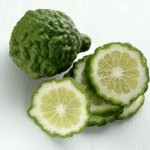What the …?!?!: Delineating descriptors
It’s time again, boys and girls, to play “What does this wine taste like?” brought to you by the experts at the world’s foremost wine magazines.
I recently sampled the wonderful Chateau Musar Jeune white wine. While searching for the price (my receipt was not at hand), I stumbled upon these assessments:
• Robert Parker’s Wine Advocate: “a big hit of mouth-puckering lime and green  apple … once you adjust your palate to it, it is awfully nice, friendly, fruity and easy, with good acidity and a clean, tasty finish.”
apple … once you adjust your palate to it, it is awfully nice, friendly, fruity and easy, with good acidity and a clean, tasty finish.”
• Wine Enthusiast: “There’s a hint of violet perfume that permeates this dry yet honeyed wine. The palate is fruity, with abundant ripe cherry and grapefruit flavors, and layers of crushed chalk and stone lend a minerally complexity that builds on the midpalate.”
• Wine Spectator: “The dried mango, apple tart and melon flavors are firm, featuring hints of richness. Caramel and buttery notes appear on the finish.”
Now admittedly this is a fascinating, unusual wine blending vermentino, vignier and chardonnay. But aside from two mentions of apple, these seem like descriptions of three quite different wines. Is it mouth-puckering or honeyed? Is there cherry or melon? Is the finish minerally or buttery?
One of the prevailing talking points in the wine world is that scores are less important than the descriptions that come with them. Perhaps these wildly varying assessments put the kibosh on even that notion. That so much depends on when and how (especially the temperature) a wine is tested might explain these disparities, or maybe bottle variation.
 That’s one reason I go with broad fruit descriptors like citrus and stone fruit rather than Kaffir lime and Colorado peaches. I try to assess the balance and texture, but in the above case, experts even differ on the texture.
That’s one reason I go with broad fruit descriptors like citrus and stone fruit rather than Kaffir lime and Colorado peaches. I try to assess the balance and texture, but in the above case, experts even differ on the texture.
In the end, we’re all capturing a snapshot of the wine. But maybe, just maybe, our assessment of the wine’s overall quality is more useful than the flowery/fruity delineations.



